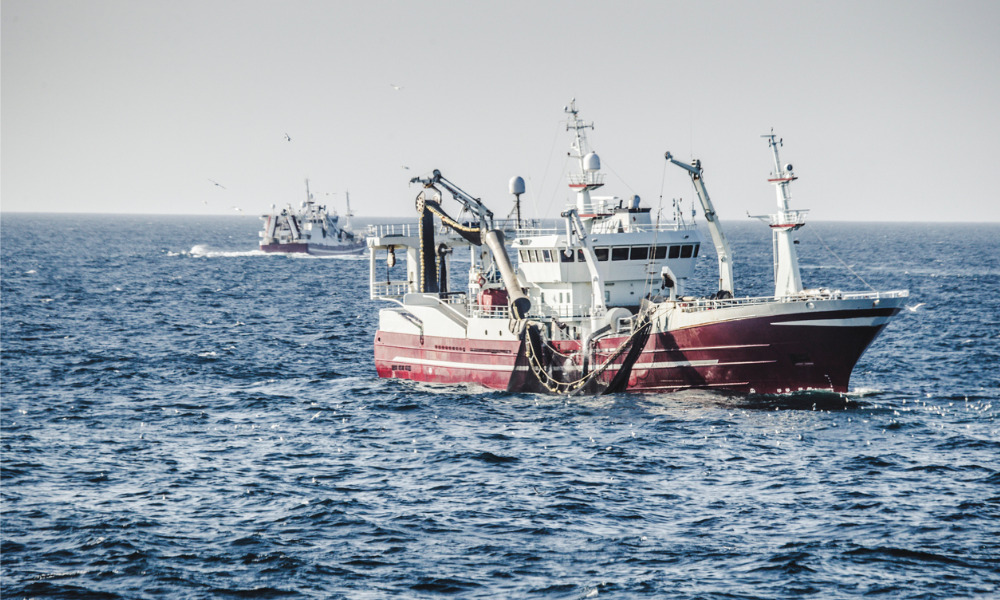'Pockets of change' could mark beginning of culture shift

Commercial fishing is considered one of the most dangerous occupations in the world. Governments in Canada have spent decades pushing safety messaging and developing new regulations, and while it appears as though the industry may finally be getting on board, it could still be a long time before we see a reduction in the number of deaths and injuries.
“We're not seeing significant changes right now,” says Ken Potter, a board member with the Transportation Safety Board of Canada. “We're seeing some pockets of change, but the statistics don't seem to indicate any dramatic change in safety in the industry.”
Between 1992 and 2021 the industry has seen a steady rate of about 12 deaths per year. Between 2018 and 2020 Canada saw 45 fishing workers die on the job, the highest three-year total in 20 years. Between July 2020 and June 2022, 19 fishers lost their lives. “Those are 19 people that went to work and didn't come home to their families and communities,” says Potter.
Fishing occupational health and safety regulations are enforced at the provincial level, whereas Transport Canada provides fishermen with a national regulatory framework that applies to the structural and operational safety of vessels. The TSB operates independently from Transport Canada, and makes strong recommendations to the regulator, one of the latest being the need for everyone on board a fishing vessel to wear a personal flotation device. Despite Transport Canada not mandating the wearing of PFDs onboard fishing vessels, provinces have been heeding the TSB’s recommendation such as in New Brunswick, where the province will make the wearing of PFDs mandatory beginning in June 2024.
Combatting an inherited culture
Wearing a lifejacket or PFD while on board a commercial fishing vessel at sea might seem like an obvious best practice, but Potter says, “we see the resistance out there.” He likens it to the conversation around seatbelts in the 1960’s and 70’s. “There was pushback, people didn't want to do it,” says Potter, but now it’s common, “it was sort of a no brainer…and that's sort of the way we feel about PFDs.”
Part of the reason behind the resistance is an anti-safety attitude passed down throughout the generations. “It's a cultural thing amongst fish harvesters,” says Potter, “most of them are multigenerational when it comes to fish harvesting, they've done the same thing their fathers and grandfathers did and there is a bit of pushback there.”
Embracing change
Decades of safety messaging combined with the repeated tragedies of fishers lost at sea, like Christian Atwood on boxing day, is ushering in a new generation of fishers willing to put safety first, at least according to one expert.
Matthew Duffy is the executive director of Fish Safe NS, a non-profit association that promotes safety in Nova Scotia’s fishing industry. It has close to 1,600 members.
Duffy has been at the helm of the organization for the past six years and during that time he’s witnessed a safety shift. “I've seen insurmountable amount of changes in that time alone,” says Duffy, “when you look back, when this association first started, the conversations that you would have at the wharf are very different than what it looks like today.”
At the wharf
Duffy says fishers used to ask questions about why they need to wear PFDs, “there would be maybe a bit more negativity around that.” He says now fishers are proud of the safety measures they have in place and will boast about the high-tech PFDs they have aboard, the state-of-the-art life rafts, and “beautifully built and welded” reboarding ladders.
For Potter, that’s the kind of culture shift he hopes the TSB can continue to inspire. “We're here to support those that are pushing for change.” And it’s about time the industry embrace safety on the high seas.





